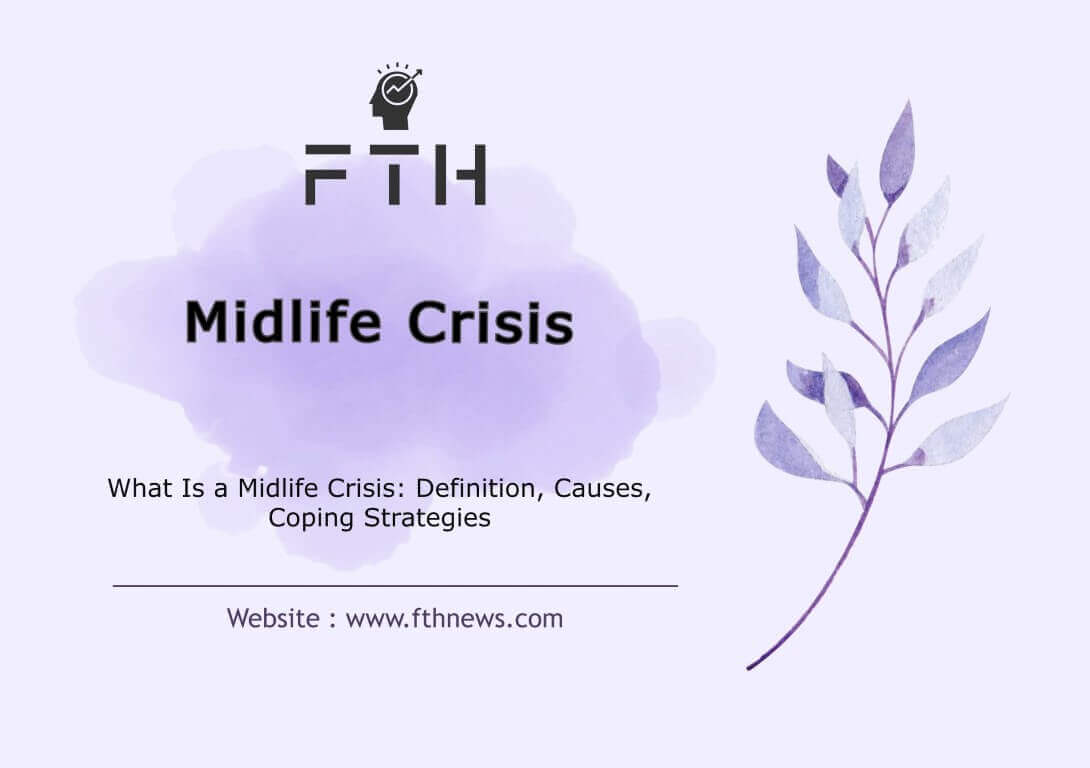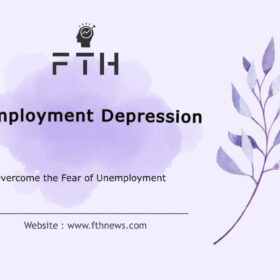
As we journey through life, there comes a point where we may find ourselves grappling with existential questions, feeling dissatisfied with our choices, and experiencing what is commonly known as a “midlife crisis.” But what exactly is a midlife crisis, and how can we navigate through this transitional phase with grace and resilience?
In this article, we delve into the depths of the midlife crisis, exploring its definition, symptoms, causes, and strategies for finding peace amidst the turmoil.
The Origins of the Midlife Crisis: A Brief History
Coined by psychoanalyst Elliott Jacques in the 1960s, the term “midlife crisis” emerged as individuals in middle adulthood grappled with the profound existential realities of aging and mortality. This period marked a significant transition, prompting deep introspection and soul-searching as people confronted the fleeting nature of time and the uncertainty of the future.
Defining the Midlife Crisis
A midlife crisis is often portrayed as a period of significant self-reflection, doubt, and anxiety that typically occurs in middle adulthood, usually between the ages of 35 and 60. It is characterized by a profound sense of dissatisfaction with one’s life, career, relationships, and overall direction. However, it’s essential to recognize that not everyone experiences a midlife crisis in the same way, and it can manifest differently for each individual.
In contemporary society, the concept of a midlife crisis has evolved, often associated with stereotypes such as extravagant purchases and marital upheavals. Yet, its manifestations vary widely among individuals, reflecting the unique circumstances and challenges they face during this transitional phase of life.
While experiencing a midlife crisis can be challenging, it can also be an opportunity for growth, self-discovery, and transformation. By embracing change, setting goals, seeking support, and practicing self-care, individuals can navigate through this transitional period with resilience and grace, emerging stronger and more fulfilled than ever before.
Symptoms of a Midlife Crisis
Symptoms of a midlife crisis can manifest in various ways, serving as signals of underlying dissatisfaction and existential questioning. These symptoms may include:
- Feelings of Restlessness: Individuals may experience a pervasive sense of restlessness or feeling “stuck” in their current circumstances. This can prompt a yearning for change and exploration of new possibilities in various aspects of life.
- Questioning Life Choices: Intense introspection and self-examination become prevalent as individuals scrutinize their life choices, career paths, and personal goals. This quest for deeper meaning and fulfillment often accompanies the midlife crisis experience.
- Mortality Awareness: Heightened awareness of mortality and the passage of time emerges, leading to existential concerns and a profound sense of urgency to make the most of life’s opportunities. This realization prompts individuals to reflect on their legacy and prioritize what truly matters to them.
- Desire for Change: A strong inclination towards change becomes apparent, often accompanied by impulsive behavior or sudden lifestyle shifts. Individuals seek to break free from routine and pursue new experiences that align with their evolving sense of self.
- Relationship Strain: Tensions and strains in personal relationships become evident, including romantic partnerships, friendships, and familial bonds. As individuals reassess the dynamics and significance of their connections, conflicts may arise as they navigate through this period of transition.
By recognizing and acknowledging these symptoms, individuals can embark on a journey of self-discovery and growth, navigating through the midlife crisis with resilience and purpose.
Causes of the Midlife Crisis
While the midlife crisis manifests primarily through symptoms, its roots lie in a myriad of internal and external factors.
that contribute to feelings of restlessness, dissatisfaction, and existential questioning. Understanding these underlying causes can shed light on the complexities of this transitional phase:
Internal Factors:
- Psychological Turmoil: Internal conflicts, unresolved traumas, or unmet aspirations from earlier life stages may resurface during middle age. Individuals may grapple with questions of identity, purpose, and fulfillment, prompting a deep reevaluation of their life’s trajectory.
- Existential Reflection: As individuals confront the reality of their mortality and the passage of time, existential concerns may intensify. The awareness of finite time prompts introspection on life choices, regrets, and unfulfilled dreams, fueling the desire for change.
External Factors:
- Physical Transitions: Aging brings about a host of physical changes, including hormonal shifts, declining health, and menopause (in women). These changes can trigger feelings of unease and anxiety about the future, prompting individuals to reassess their priorities and goals.
- Family Dynamics: Life transitions such as empty nest syndrome, where children leave home, or caregiving responsibilities for aging parents, can disrupt familial dynamics. These shifts may evoke feelings of loss, loneliness, or increased stress, contributing to the onset of a midlife crisis.
- Career Challenges: Transitions in career paths, such as job loss, stagnation, or retirement, can challenge one’s sense of identity and purpose. Individuals may grapple with feelings of inadequacy or disillusionment with their professional achievements, prompting a period of soul-searching.
- Financial Pressures: Economic instability, debt, or inadequate retirement savings can exacerbate feelings of anxiety and discontent during middle age. Financial concerns may limit individuals’ ability to pursue their passions or achieve their desired lifestyle, leading to a sense of unfulfillment.
Midlife Crisis in Men
Men often face unique challenges during the midlife crisis, influenced by a combination of societal expectations, biological factors, and personal circumstances. Key aspects include:
Pressure to Conform:
Men are frequently pressured to conform to societal ideals of success, achievement, and masculinity. This pressure can intensify during middle age, leading to struggles with:
- Career Stagnation: Men may experience feelings of stagnation or frustration in their careers, particularly if they perceive themselves as not meeting societal standards of success or advancement.
- Identity Crises: The midlife period often prompts men to reassess their sense of identity and purpose. They may question whether they have achieved their goals and whether their accomplishments hold meaning.
- Legacy and Impact: Concerns about leaving a lasting legacy and making a meaningful impact on the world can become more pronounced during the midlife crisis. Men may feel a sense of urgency to fulfill their aspirations and leave a mark on the world.
Midlife Crisis for Women
Women navigate distinct challenges during the midlife crisis, influenced by societal expectations, biological changes, and personal experiences. Key aspects include:
Shifting Roles:
Women may experience significant shifts in roles and responsibilities during middle age, including:
- Balancing Caregiving Duties: Many women find themselves balancing caregiving responsibilities for children, aging parents, or other family members. This can create feelings of overwhelm and stress as they navigate competing demands.
- Career Aspirations: Women may reassess their career goals and aspirations during the midlife crisis. They may feel compelled to pursue new opportunities or redefine their professional paths to align with their evolving priorities.
- Physical Transitions: The onset of menopause brings about physical changes that can impact women’s sense of self and well-being. Hormonal fluctuations, along with societal pressures regarding aging and beauty, add complexity to this phase.
Gender Dynamics
Men and women may experience the midlife crisis differently, influenced by a variety of factors:
- Men: Career concerns, identity issues, and societal expectations of success and masculinity often play prominent roles in men’s midlife experiences.
- Women: Balancing multiple roles, navigating physical changes, and societal pressures regarding aging and beauty are central to women’s midlife experiences.
Recognizing the complex interplay of internal and external factors contributing to the midlife crisis is essential. Through introspection, support networks, and proactive coping strategies, individuals can navigate this transitional phase with resilience and purpose, emerging stronger and more fulfilled on the other side.
Relationship Between the Midlife Crisis and Depression
The midlife crisis and depression often intertwine due to various factors. During the midlife crisis, individuals grapple with existential questions about identity, purpose, and mortality, which can evoke feelings of sadness and despair akin to depression. This period is characterized by significant life transitions, such as career changes or relationship shifts, which can exacerbate stress and uncertainty, contributing to depressive symptoms. Additionally, societal pressures and unmet expectations about achievements by middle age can lead to feelings of inadequacy, further fueling depression. Biological changes, including hormonal fluctuations and emerging health issues, may also play a role in depressive symptoms during this phase of life.
Navigating Through the Midlife Crisis: Coping Strategies
Navigating through the midlife crisis requires resilience and self-reflection. Here are enhanced coping strategies:
Self-reflection:
Take time to introspect and identify your values, passions, and aspirations. Reflect on what brings you joy and fulfillment, and consider the changes you want to make in your life.
Seek support:
Reach out to friends, family, or a therapist for guidance and emotional support. Sharing your feelings and experiences with others can provide valuable perspective and validation.
Set goals:
Establish clear, achievable goals that align with your values and aspirations. Break them down into smaller, manageable steps to track your progress and maintain motivation.
Embrace change:
View the midlife crisis as an opportunity for growth and self-discovery. Embrace change as a natural part of life and be open to new opportunities and experiences that may arise.
Practice self-care:
Prioritize self-care activities that nurture your physical, mental, and emotional well-being. Engage in regular exercise, meditation, hobbies, and spending time in nature to recharge and replenish your energy.
Explore new hobbies and interests:
Use this transitional phase to explore new hobbies or interests that pique your curiosity. Engaging in novel activities can reignite your sense of passion and purpose.
Cultivate gratitude:
Practice gratitude by focusing on the positive aspects of your life and acknowledging the blessings you have. Keeping a gratitude journal or reflecting on what you’re thankful for can shift your perspective and enhance your overall well-being.
Connect with others:
Seek out opportunities to connect with like-minded individuals who share your interests or goals. Joining clubs, community organizations, or online forums can provide a sense of camaraderie and support.
Explore therapy or counseling:
Consider seeking professional guidance through therapy or counseling to explore deeper issues and gain valuable insights into your thoughts, feelings, and behaviors.
Practice mindfulness:
Incorporate mindfulness practices into your daily routine to cultivate present moment awareness and reduce stress. Activities such as meditation, deep breathing exercises, or yoga can help calm the mind and foster inner peace.
Reevaluate priorities:
Take this opportunity to reevaluate your priorities and make intentional choices about how you want to spend your time and energy. Focus on aligning your actions with your values and long-term goals.
By incorporating these coping strategies into your toolkit, you can navigate through the midlife crisis with greater resilience, purpose, and fulfillment. Remember that this transitional phase offers a unique opportunity for growth and self-discovery, and with the right mindset and support, you can emerge stronger and more fulfilled on the other side.
Conclusion:
In conclusion, the midlife crisis is a natural and often transformative phase of life, characterized by introspection, questioning, and growth. While it may present challenges, it also offers opportunities for self-discovery and renewal. By understanding its symptoms, causes, and coping strategies, we can navigate through the midlife crisis with resilience and emerge stronger and more fulfilled. Remember, you are not alone on this journey, and with patience and self-reflection, you can find peace and purpose amidst the turmoil of midlife.
FAQ
The midlife crisis refers to a period of psychological and emotional turmoil that some individuals experience during middle adulthood, typically between the ages of 40 and 60. It is characterized by feelings of restlessness, dissatisfaction, and existential questioning about one’s life choices, identity, and mortality.
Midlife crisis typically occurs around ages 40 to 60 for both men and women. However, the exact age can vary widely among individuals.














